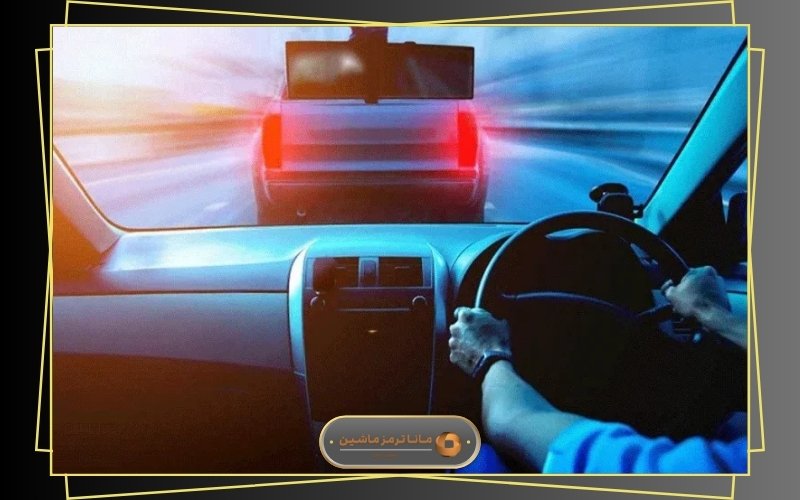Why Do Car Brakes Fail and What Should You Do in That Moment?
In this article we read
ToggleBrake failure is one of the most dangerous and stressful situations a driver can experience on the road. Given the vital importance of a properly functioning braking system, this article will explore the causes of brake failure and the emergency steps you should take if it happens.
If you’ve ever wondered what to do when your brakes suddenly stop working, this guide is for you.
Stay with Mana Tormoz…
What to Do When Your Car’s Brakes Fail
1. Stay Calm in a Critical Situation
The first and most important action during brake failure is to remain calm. Panic only reduces your ability to make the right decisions. Keeping your composure allows you to act according to the following steps and avoid an accident.
2. Turn On Hazard Lights
One of the first essential steps is to turn on your hazard lights or indicators. These lights alert other drivers that your vehicle is experiencing a problem. This warning signal helps them maintain a safe distance and avoid potential collisions.
3. Check the Brake Pedal
If the brake pedal feels unusually soft, it might be due to a loss or depletion of brake fluid. In this case, press the pedal repeatedly—there might still be some fluid left in the system, which could help slow the car down. If the pedal feels stiff, check whether something is stuck underneath it. It’s best to ask a passenger for help so the driver can focus on steering.
4. Slow Down Using Downshifting
If cruise control is active, turn it off immediately to exit constant speed mode. In manual transmission cars, gradually downshift to lower gears to reduce speed without upsetting the car’s balance.
In automatic vehicles, switch to manual or tiptronic mode and gradually shift to lower gears. Avoid shifting abruptly from high to low gears, as this could lead to loss of control and compromise safety.
5. Use the Handbrake Gradually
The handbrake (or parking brake) is another effective way to reduce speed. It engages the rear wheels and can significantly slow the vehicle. However, apply it gently and gradually to avoid locking the wheels. Sudden wheel lock-up can destabilize the vehicle and increase the risk of rollover or collision. The best approach is to pull the handbrake just enough to engage the rear pads without locking the wheels.
These emergency steps can help you stay in control during brake failure and prevent serious accidents. Still, it’s crucial to regularly inspect your braking system to reduce the risk of facing such dangerous situations.
Using Road Shoulders and Natural Obstacles for Emergency Stopping
If none of the previous methods manage to slow down the vehicle, one effective option is to steer the car toward the road shoulder. By moving the vehicle onto a non-asphalt surface, the friction between the tires and the ground increases, helping to gradually bring the vehicle to a stop. However, it is essential to ensure that the shoulder is free from dangerous obstacles such as large rocks or deep bumps to avoid causing an accident.
Natural elements like grass fields, small shrubs, or bushes can also serve as frictional barriers that help reduce the vehicle’s speed and bring it to a halt.
In mountainous roads and passes, the situation can be much more complex and hazardous. In such conditions, stay highly alert to the road layout to prevent the vehicle from veering off cliffs or steep edges. If you don’t have enough time or space to use engine braking or the handbrake, you can carefully steer the vehicle toward the mountain wall or hillsides. While this method comes with its own risks, in extreme emergencies it may be the only viable solution to slow down the car.
Using Artificial Road Barriers for Controlled Impact
In scenarios where speed can only be reduced through collision, artificial road obstacles may be a reasonable last resort. Barriers like water-filled or sand-filled barrels—often placed on roads to absorb impact—can be used as relatively safe crash points.
Additionally, roadside curbs can help slow down the vehicle by increasing resistance between the tires and the road surface, especially when other options are no longer effective.
Using Other Vehicles for Controlled Collision
This option is strongly discouraged and is extremely risky in most situations. However, in certain extreme emergencies, it may be considered as a last resort. If there is absolutely no other way to stop the vehicle, you can carefully steer your car toward another vehicle moving at roughly the same speed and make a relatively controlled impact.
In such a case, the braking power of the other vehicle might help reduce your speed and lessen the severity of a full-speed crash. Although this method is highly dangerous and not recommended, it may be the only remaining option in a life-threatening situation.
Final Note
In any of these scenarios, the most important factor is staying calm and thinking clearly. Rational decisions during crisis situations are key to minimizing danger and protecting your life as well as the lives of others on the road.
Main Causes of Brake Failure in Vehicles
Brake failure often results from issues within the braking system. One of the most common causes is brake fluid leakage, which leads to a drop in fluid level and, consequently, weakens brake performance. A malfunctioning brake master cylinder or worn-out brake pads can also directly affect braking efficiency and result in complete brake failure.
To avoid such dangerous situations, it’s highly recommended to have your vehicle’s braking system regularly inspected by a professional. These routine checkups can greatly increase the chances of detecting and fixing potential problems before they lead to serious incidents.
Conclusion
Although facing brake failure can be a frightening and stressful experience, following the guidelines outlined in this article can help prevent serious risks and allow you to bring your vehicle to a relatively safe stop by the roadside.
Additionally, keep in mind that brake pads should be inspected every 20,000 kilometers and replaced if necessary. Also, brake fluid should be changed every two to three years to ensure optimal performance and maintain consistent braking power.




